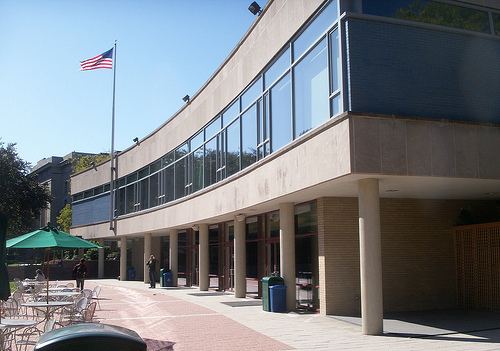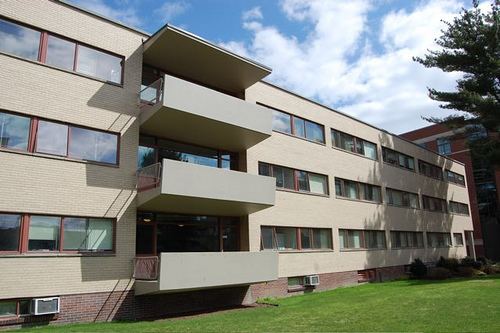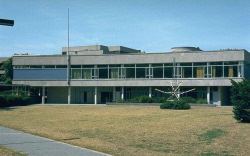 | ||
Similar General Artemas Ward Ho, Weld Boathouse, Johnston Gate, University Hall, Lavietes Pavilion | ||
The Harvard Graduate Center, also known as "the Gropius Complex" (including Harkness Commons), was commissioned of The Architects Collaborative by Harvard University in 1948. The first modern building on the campus, it was also the first endorsement of the modern style by a major university and was seen in the national and architectural presses as a turning point in the acceptance of the aesthetic in the United States.

The Architects Collaborative (TAC), a modernist firm headed by Walter Gropius and seven younger architects, was a bold choice for the typically traditional university. Though it cannot be said that Gropius was the sole designer, those that held strongly to his ideals collaboratively designed Harkness Commons.

Coming from the Bauhaus, Gropius had been a pioneering innovator of educational architecture and many of his hallmarks can be seen years later in Harkness Commons. The physical Gropius hallmarks – large windows, flowing rooms, floating facades on raised pilotis – are all present here.

In justifying the placement of these innovations at Harvard, Gropius reveals his passion, and activism, for the acceptance of modernism on college campuses. Gropius makes clear statements for specific innovations, “…Our contemporary architectural conception of an intensified outdoor-indoor relationship through wide window openings and large undivided window panes has ousted the small, cage-like, “Georgian” window.” But he is also more far reaching and makes what is now a commonplace case for architectural diversity and investment in current styles: “If the college is to be the cultural breeding ground for the coming generation, its attitude should be creative, not imitative”

Gropius advocated pushing architecture forward as the society needs it. He concluded by saying that “There is no finality in architecture – only continuous change.”

The building was completed in 1950, and was one of the first major projects in the Architects Collaborative office. The building is also graced with the works of avant-garde, Surrealist or Bauhaus artists Joan Miró, Josef Albers, Jean Arp and Herbert Bayer, and also has a sculpture by Richard Lippold in the courtyard near it.
The buildings are now primarily used as a student center and as a dormitory complex for Harvard Law School.
